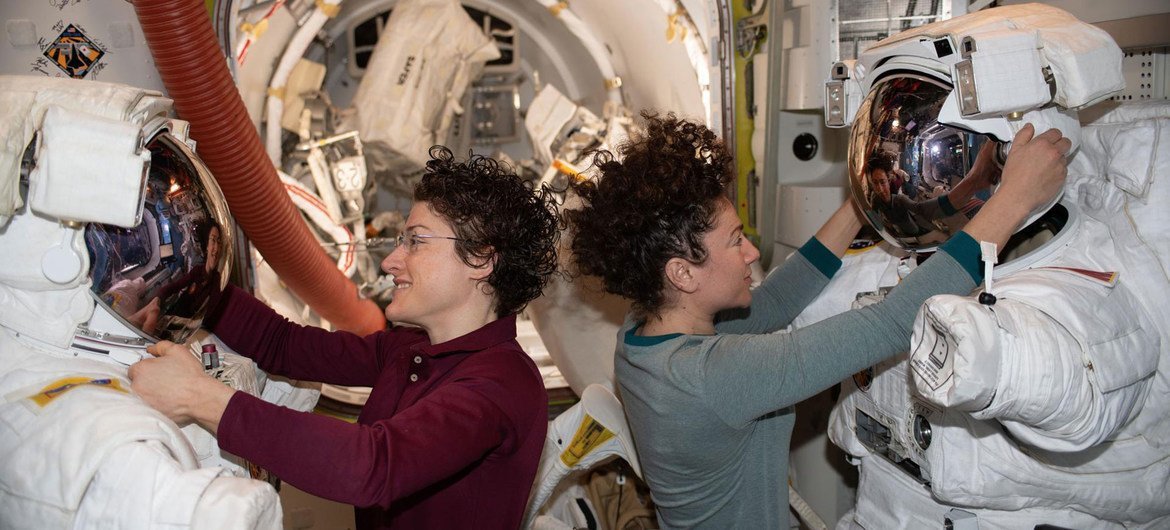To highlight this and other issues surrounding the push for gender equality, Women in Space, has been chosen as the theme for this year’s , which began on Monday.
The goal is to bring more awareness to the issue of gender diversity and identify the obstacles that women are facing when entering space-related careers and contribute to discussions on ending disparities.
The UN also wants to show how women from different backgrounds and regions, face different issues and challenges within the industry.
Gender equality
Gender inequality is a long-standing and widespread issue in education and careers in Science, Technology, Engineering, and Mathematics (STEM) fields, both in developed and developing countries.
Recent research shows that women are still visibly underrepresented as researchers in STEM fields in all regions, averaging just 28.8 percent, globally.
Overall, the number of women in the aerospace industry have fluctuated at around 20 percent for at least 30 years. Only 11 percent of astronauts so far, have been women.
To address some of those issues, the () launched , to promote women's empowerment.
‘Better future’
For Simonetta Di Pippo, UNOOSA’s Director, “equality is the pre-condition for a better future.”
“Space for women means strengthened awareness, capacity, and skills, empowering young women and girls globally and promoting gender equality,” she says.
Over 560 people have traveled to space, but less than 70 of them are women. Of the 225 spacewalks that have been taken, only 15 were by women.
Women CEOs also represent 19% of the leaders in aerospace and defence, even though space tends to offer high earning jobs in a fast growing sector, providing women with more financial freedom and empowerment.
In the future, 90% of all jobs will require STEM related skills and women must possess skills and education to be competitive in the future employment market, says UNOOSA.
According to the UN, to succeed in addressing the 17 , the world must ensure that the benefits of space reach women and girls and that women and girls play an active and equal role in space science, technology, innovation, and exploration.
New frontiers
On 4 October 1957, the launch of the first human-made Earth satellite, Sputnik 1, paved the way for space exploration.
From the very beginning of the Space Age, the UN has recognized that outer space represented a new frontier for all humanity.
In 1958, the General Assembly adopted its, resolution 1348 (XIII) entitled "Question of the Peaceful Use of Outer Space".
Almost a decade later, on 10 October 1967, the , entered into force.
Space science and technology and their applications are increasingly being used to support a wide range of UN activities, with at least 25 entities, and the World Bank Group, routinely making use of technological breakthroughs being developed.

© NASA
NASA astronauts Christina Koch (left) and Jessica Meir work on their spacesuits ahead of a spacewalk they are conducting.






